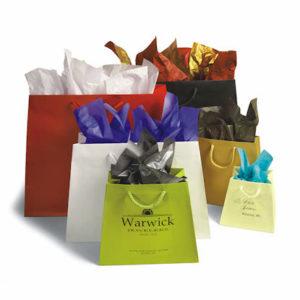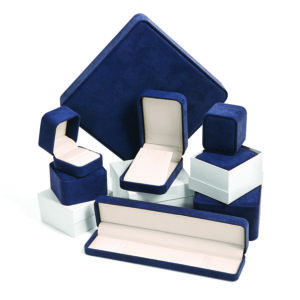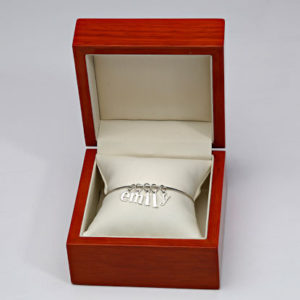Care Package
More than a container, packaging has become an important element of the marketing mix, communicating a brand’s identity, values and promise to consumers at the point of sale and delivering throughout the product experience.
Packaging is meant to communicate a purpose: what your brand stands for and what it means for your customer. Packaging is a powerful tool because it tells consumers why your product and brand are different.
 Known for its clean, minimalist packaging, Apple is a master at creating an iconic sensory experience that communicates its brand without words, cites retail consultant Kate Peterson, president of Performance Concepts, Montgomery Village, Maryland. “Apple makes its packaging as artistic and visually appealing as the device inside. Every corner of the box is clean. The color is an elegant, minimalist white. The packaging is designed to be clean, simple and direct in a world of sensory overload.”
Known for its clean, minimalist packaging, Apple is a master at creating an iconic sensory experience that communicates its brand without words, cites retail consultant Kate Peterson, president of Performance Concepts, Montgomery Village, Maryland. “Apple makes its packaging as artistic and visually appealing as the device inside. Every corner of the box is clean. The color is an elegant, minimalist white. The packaging is designed to be clean, simple and direct in a world of sensory overload.”
Packaging is an essential component of a brand’s value and a shopper’s experience—a trigger for what you are creating in your store and the emotional responses that elicits in your customers. According to the Packaging Matters 2016 Report by WestRock, packaging plays a key role in helping brands and consumers stay connected amid a shifting retail landscape.
“Packaging is the sizzle, the steak is what’s inside,” describes Mike Kaplan, Rocket Redbox, Elmsford, New York. “Competition of talented people has made jewelers more creative to compete, and packaging is a great way to stand out.”
A little detail that makes a big impression, packaging should be treated as an integral part of your marketing strategy that helps to define who you are as a brand with your customers, says Denise Cabrera, product manager, display and packaging for Rio Grande, a Richline brand based in Albuquerque, New Mexico. “Packaging is a way to extend the care you take in creating your jewelry into a more complete experience for your customers—one they will always remember.”
Be Colorful
Color and name are the leading ways to customize packaging, says Kaplan, who cites Tiffany as the best example of outstanding use of color in branding. “The iconic robin’s egg blue with that white bow evokes a Pavlovian response that something precious is inside because it comes from Tiffany. Packaging is the first thing people see, and you only have one shot at making a first impression.”
Lighter, more uplifting colors are in play today, not so saturated and dark, describes consultant Andrea Hill for the Chicago-based Hill Management Group. “People see enough negativity, they don’t need anything that is dark from retailers. Your color scheme and messaging should reflect the joy of life, the joy of giving, and the idea of love.”
Just as in the fashion world there are cycles of preferred colors in packaging, says Sharon Pisciotta for Quality Gold’s GemPak in Dallas, Texas, who sees an uptick in blue, particularly navy.
With Kraft and natural fabrics growing in popularity in packaging materials, neutral tones of these materials are in fashion because they make it easy to incorporate a brand’s color palette with tissue or matching ribbon, says Cabrera.
Special details like bows, tissue paper and logo labels help to make a jeweler’s packaging unique. Kaplan advises jewelers introduce new colors or color combinations and textures within their brand identity to keep things fresh.
Pisciotta also cites note card inserts as verbal cues, reinforcing the idea of love in the context of your business. She hails packaging an important opportunity to include special touches, like motivational messages, coupons, event invitations, special gift-wrap, and gift with purchase like a jewelry cleaning cloth. Small efforts of customization go a long way to make the experience distinct. Jewelers can get as creative as they want and their budget will allow.
Shelf Life
If the packaging is nice people will save it, says Kaplan. “A beautiful box becomes a great keepsake. A nice store bag gets reused. Packaging continues the store experience outside of the store for the buyer, gift receiver, and onlookers. They become the perfect advertising vehicles to engage consumers. Packaging helps to encourage repeat purchases.”
 It’s not uncommon for jewelers to offer several tiers of packaging for different jewelry items, from fashion to heirloom, says Piscotta. “The trend among jewelers is to have three styles of packaging for lower, mid and higher end items that maintain a cohesive brand look throughout.”
It’s not uncommon for jewelers to offer several tiers of packaging for different jewelry items, from fashion to heirloom, says Piscotta. “The trend among jewelers is to have three styles of packaging for lower, mid and higher end items that maintain a cohesive brand look throughout.”
Piscotta also notes two different styles for brick and mortar and ecommerce, taking into consideration shipping safety of the item and weight for postage. She cites the paper box still most popular, with livelier, more colorful choices trending for ecommerce.
With the winter holiday selling season approaching, Piscotta urges jewelers take stock in their packaging needs and place custom print orders before fall gets in full swing, noting that Quality Gold runs a print special post JCK Las Vegas through Sept. 15. “When you get into October and November it’s difficult to rush print jobs through.”










